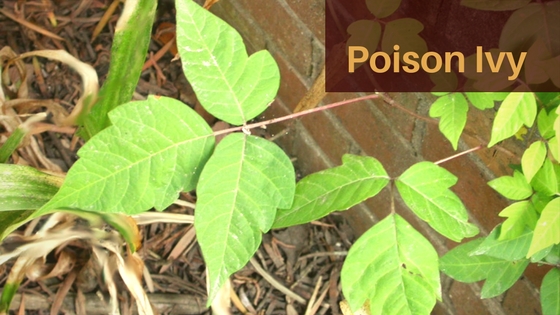Poison Ivy
 Poison ivy, a noxious plant indigenous to both Asia and Northern United States, is notorious for causing Urushiol-induced contact dermatitis—a bothersome and sometimes painful skin reaction—in individuals who come into contact with it. This toxicity is attributed to urushiol, a clear fluid substance present in the plant’s sap.
Poison ivy, a noxious plant indigenous to both Asia and Northern United States, is notorious for causing Urushiol-induced contact dermatitis—a bothersome and sometimes painful skin reaction—in individuals who come into contact with it. This toxicity is attributed to urushiol, a clear fluid substance present in the plant’s sap.
Check Out: Vegetation Killer Guide to learn hoe to eradicate Poison Ivy
Contrary to its common name, poison ivy (Toxicodendron radicans) is not a true ivy (Hedera); instead, it belongs to the cashew and pistachio family. While it plays a role in the ecosystem by serving as a food source for various creatures, and its seeds are consumed by birds, poison ivy often finds itself categorized as an unwelcome weed due to its notorious ability to provoke skin irritation.
Examining the characteristics of Toxicodendron radicans unveils a deciduous nature, with trifoliate leaves comprising three almond-shaped leaflets. The color spectrum of its foliage is extensive, ranging from light green in its youth to a deep, mature green, transitioning to a vibrant red as autumn arrives. It’s noteworthy that interpretations of the color progression differ, with some sources asserting that leaves appear red during the growth phase, turn green in maturity, and eventually revert to red, orange, or yellow hues during the fall season.
Mature leaves exhibit a subtle glossiness, with each leaf measuring 3–12 cm (1.2–4.7 in) in length, occasionally extending up to an impressive 30 cm. The leaf margins, notably, are either minimally toothed or completely smooth, contributing to the sleek appearance of the leaf surface. Intriguingly, the leaflet arrangements vary along the vine, and a distinctive feature is the absence of thorns, setting it apart from other plant species.
As an emblem of caution in the natural world, poison ivy serves as a reminder of the importance of awareness and caution when navigating areas where it might be present. Its distinct appearance and well-documented propensity for causing skin reactions underscore the need for a respectful coexistence with the diverse flora that populates our surroundings.


